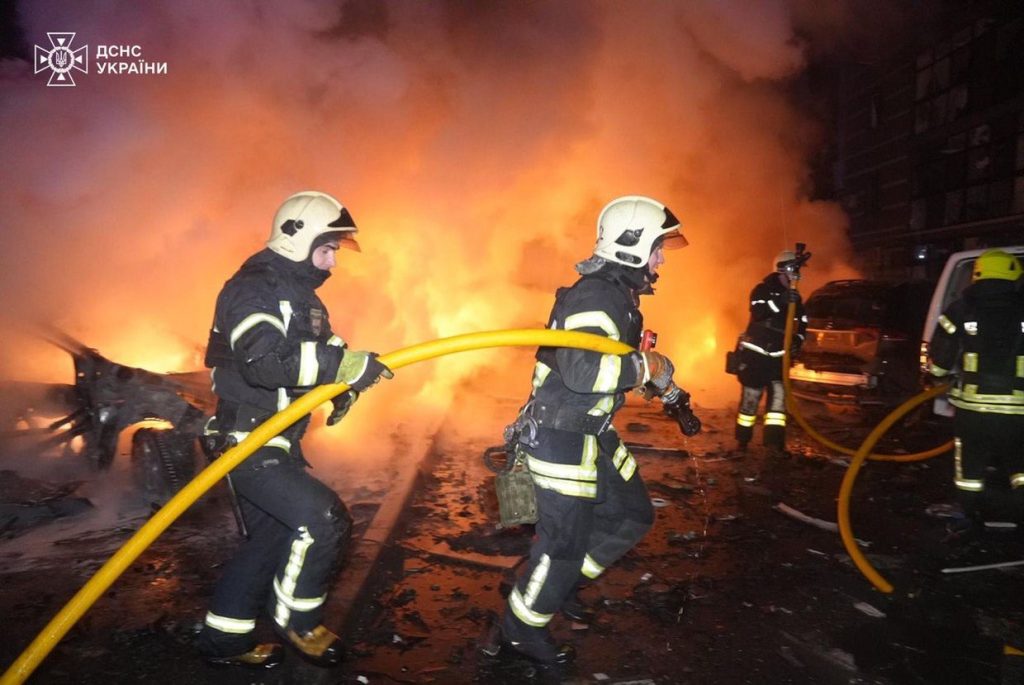Overview of Russian Attacks on Ukrainian Regions
On February 10, 2023, regional authorities in Ukraine reported that Russian attacks across multiple regions resulted in the deaths of at least two civilians and injured 16 others. These attacks are part of a consistent pattern of daily Russian strikes targeting civilian areas, with authorities consistently reporting casualties as Russia intensifies its offensive efforts. Overnight, Russia launched 83 Shahed-type combat drones and decoy drones, according to the Ukrainian Air Force. Ukrainian air defenses managed to shoot down 61 of these drones over 11 oblasts, while the remaining 22 drones were either neutralized or caused no damage. Despite these efforts, the attacks caused significant harm to civilians and infrastructure across several regions.
Regional Impact of the Attacks
The impact of the Russian attacks was felt across several Ukrainian regions. In Donetsk Oblast, one resident of Kramatorsk was killed, and 12 others were wounded in Kramatorsk and Kostiantynivka, as reported by Governor Vadym Filashkin. In Kherson Oblast, one person was injured, and another was killed in Russian drone attacks, according to Governor Oleksandr Prokudin. In Sumy Oblast, a civilian was injured, and windows in four apartment buildings and 15 cars were damaged in Russian strikes, as stated by the region’s military administration. In Kharkiv Oblast, a 32-year-old man was injured in a Russian first-person-view (FPV) drone attack on the village of Liutivka, as reported by Governor Oleh Syniehubov. In Zaporizhzhia Oblast, an 83-year-old woman suffered injuries to her arm during Russian shelling of the front-line town of Huliaipole, according to Governor Ivan Fedorov.
Strategic Significance of the Attacks
The Russian attacks on Ukrainian regions are not only causing human suffering but also targeting critical infrastructure and strategic locations. The use of drones and other advanced weaponry suggests a deliberate effort to disrupt Ukraine’s ability to defend itself and maintain stability in the regions. The attacks on civilian areas, such as apartment buildings and cars, indicate a broader strategy to instill fear and destabilize the population. The consistent targeting of key regions like Donetsk, Kherson, and Zaporizhzhia, which are close to the front lines, highlights Russia’s attempts to weaken Ukraine’s defenses and gain strategic advantages.
Ukraine’s Response to the Attacks
Despite the relentless Russian attacks, Ukraine has shown resilience and determination in defending its territory. The Ukrainian Air Force successfully neutralized a significant number of drones, with 61 out of 83 Shahed-type combat drones and decoy drones being shot down. This demonstrates the effectiveness of Ukraine’s air defense systems and the skill of its military personnel. Additionally, Ukraine has reportedly targeted key Russian infrastructure, such as a strategic oil refinery in Krasnodar Krai, which is a critical logistics hub for diesel fuel and aviation kerosene used by Russian troops. This attack, if confirmed, would represent a significant blow to Russia’s ability to sustain its military campaign.
Humanitarian Cost of the Conflict
The ongoing conflict in Ukraine has taken a devastating toll on civilians, with daily reports of casualties, injuries, and damage to infrastructure. The attacks on residential areas, such as apartment buildings and villages, have disrupted the lives of ordinary people, causing fear, displacement, and long-term psychological trauma. The targeting of civilians and critical infrastructure raises serious concerns about human rights violations and the protection of non-combatants under international humanitarian law. The humanitarian situation in Ukraine remains dire, with millions of people in need of assistance, including medical care, shelter, and food.
Global Perspective and Implications
The ongoing conflict in Ukraine has far-reaching implications for global security, stability, and the international order. The consistent reports of Russian attacks on civilian areas and infrastructure have drawn widespread condemnation from the international community, with calls for accountability and an end to the violence. Ukraine’s resilience and determination to defend its sovereignty have been supported by military and humanitarian aid from numerous countries, highlighting the importance of international solidarity in the face of aggression. As the conflict continues, the global community must remain vigilant and continue to advocate for a peaceful resolution that respects Ukraine’s territorial integrity and upholds the principles of international law.












